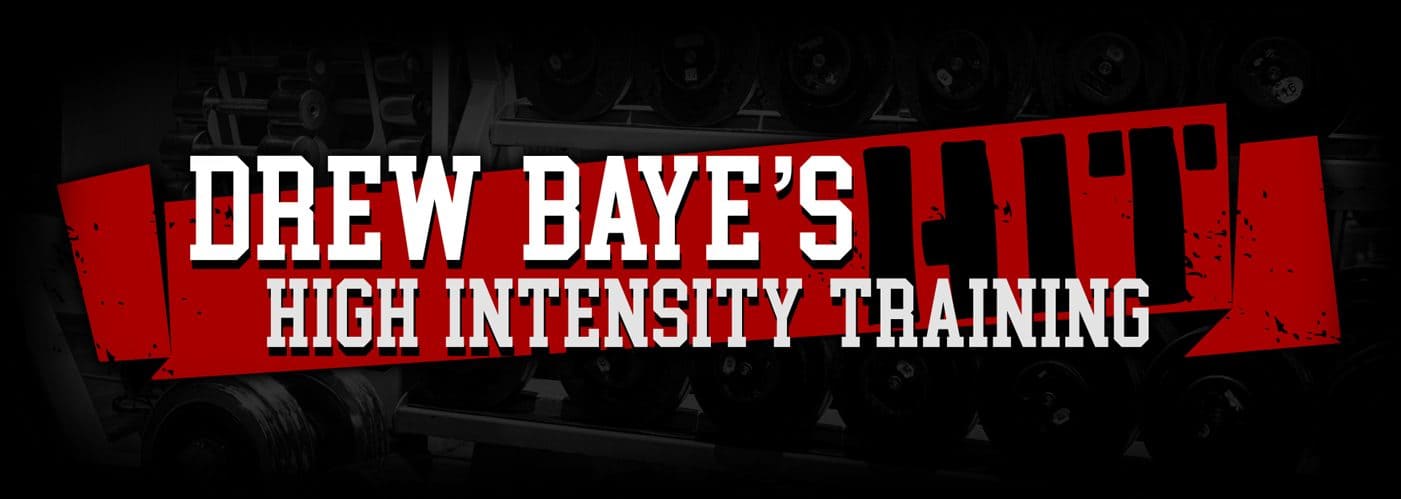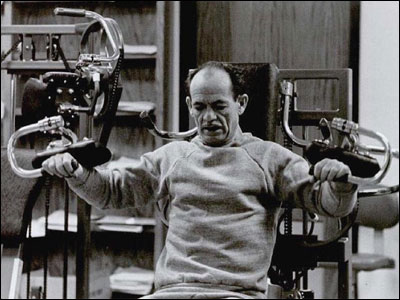Question: Some HIT experts make a training program consisting of twelve exercises and some have only six or three. And some start with nine and after few months ask to reduce it to six. What is your opinion about this issue?
Answer: All of those numbers are right for some people some of the time, but none of those numbers are right for all people all of the time.
First, a few definitions so there’s no confusion. A workout is a single exercise session. A program is a system or plan for exercising over weeks or months which includes multiple workouts and guidelines for their performance (frequency, protocols, pace, etc.).
There is no one number of exercises per program or per workout that is ideal for everybody. Minimally, your program should include at least one exercise which effectively works all the major muscle groups (those which produce movements of the arms, legs, trunk, and head), and you may wish to perform one or two additional exercises for muscle groups you need to focus on for sports or work performance or for balanced physique development. Whether you should perform all of those exercises in a single workout or divide them into two or more smaller workouts depends on your goals and your response to exercise.
It is also important to keep in mind that not all exercises place the same demands on your body, and how many you can or should do depends on which exercises you’re doing. There is a huge difference between performing a workout consisting of squats, chin-ups, dips, rows, and presses, and a workout consisting of heel raises, wrist curls, wrist extension, neck flexion, and neck extension. Both workouts include five exercises, but the first works much larger muscle groups and is going to have a much greater systemic effect and place more demands on recovery. Workout volume has more to do with how demanding the exercises are than how many there are.
Assuming you want to improve overall functional ability and not just muscular strength and size your workouts should include at least enough exercises to create an adequate systemic demand to stimulate improvements in cardiovascular and metabolic efficiency. This depends on which exercises you perform, how hard you are able to perform them, and your current level of conditioning.
If you divide the exercises in your program over several workouts you should not divide them so far that a lot more time passes between performing exercises for individual muscle groups than they need for recovery and adaptation or those muscle groups will not improve as quickly.
The general principles of exercise are the same for everybody, but the best application of those principles will vary depending on your goals and how your body responds to exercise. Because of this, any specific program or workout should be viewed as a starting point from which adjustments may be made to tailor it to your body and your goals, and not as something that is set in stone.
For more information on this read High Intensity Workouts.


Comments on this entry are closed.
And of course that all changes with time and advancement. What I “got away” with in my teens, 20’s, 30’s and 40’s is nothing like how I train now. 3 exercises is my lot each workout. After that I struggle to recall my name. 😉
Hey Lifter,
Unfortunately we recover and adapt more slowly as we age, but most people do not need this much of a reduction. There are major flaws in how people assess progress and the volume and frequency adjustments they make as a result which has led to the extremely low volume and frequency some trainees are using. There are cases where it is necessary or where it is more practical for some people, but this wouldn’t be the case for the majority.
Hey Drew,
Hope all’s well.
A quick question if I may.
As optimal frequency and volume are dependant on recovery ability and exercise tolerance of each individual, what, if any, differences would you put in place if an athlete were to go from natty to assisted?
For the sake of this example, lets assumes she/he is following one of your twice a week whole body routines, using good form, slow and controlled exercise performance, good diet, rest etc, with the only change being AAS use.
Thanks!
Jamie.
Hey Jamie,
I’d treat it like any other change which would affect recovery and adaptation. Continue with their current program for a few weeks to establish a baseline, then make a small change to volume or frequency (depending on what their current program looks like) and adjust from there based on the response.
Thanks Drew, much appreciated as always.
Hi Drew, can u point to your articles where u discuss strength and its relation to size? I feel that one should train only for strength – meaning, one should try to up the weight or reps etc. each workout or every two weeks – so that on a periodic basis our ability to lift more and more weights will improve. And this alone will lead to size gains.
My friend, otoh, believes that size and strength are two entirely different things. He gives examples of Bruce lee, saying he trained only for strength which was why he remained thin despite enormous strength. this logic seems wrong to me, although I cant put my finger on it.
Would like to hear your views.
Hey Al,
Your friend has no idea what he’s talking about. I covered this in The Myth of Training for Sarcoplasmic Versus Myofibrillar Hypertrophy
While it’s true that the ratio of strength to size gains will vary considerably between individuals (due to each person’s unique genetic makeup), one simply can’t build muscular size apart from building muscular strength. It’s impossible. Muscles hypertrophy due to getting stronger, just as they atrophy due to getting weaker.